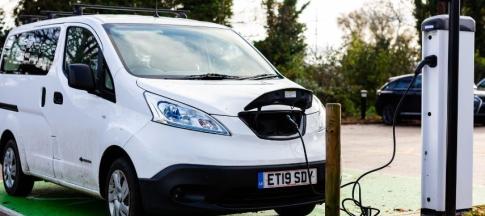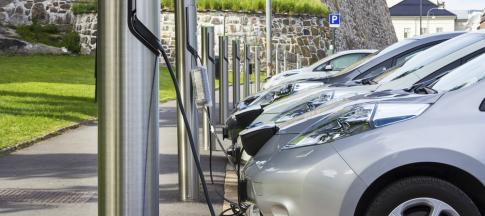
There are more new electric vans on the market with greater ranges and technology than ever before, making it hard to keep up with the latest developments.
Here, we look at what’s new in the world of 2025 electric vans, including spec and even potential legislation changes.
The latest electric van launches
The government's ZEV Mandate has set out the percentage of electric vans that a manufacturer has to register out of its total sales. This percentage increases annually and fines can be issued to van makers that don't reach their target!
This means that the race is on for manufacturers to launch the most attractive electric van on the market.
Mercedes Benz
Take Mercedes-Benz for example. Its large van, the Sprinter, had a false start when it first launched the electric version, an eSprinter. While it had an official range of under 100 miles, in reality it was much less.
Wind the clock on to 2024 and Mercedes-Benz launched a revised van that’s now capable of up to 273 miles before needing to be charged.
This does depend on whether the customer requests the largest battery pack. It’s also worth adding that the payload isn’t as great as ones with a shorter range because the battery is heavier.
Renault Master
Staying with large vans, the 2025 International Van of the Year is the Renault Master, which includes the all-electric E-Tech.
The emission-free version of the French van has a similar chequered history to the Sprinter, but Renault has come up trumps with the latest, all-new Master.
It possibly has the best electric van range, as it’s able to travel 285 miles on a single charge (according to official tests).
It doesn’t just rely on an efficient electric powertrain and a large battery. Renault has designed the van with aerodynamics in mind, making it more efficient when on the open road.
Ford E-Transit Custom
We’ve had quite a wait for the UK’s best-selling van to be available as an electric van, but the wait is over for the Ford E-Transit Custom.
Anyone wanting to move over to an electric Custom will find that it has similar configurations to the diesel version.
The payload of up to 1011kgs should be more than enough for most. The electric van is available in three power outputs including a 285PS version that’s exclusive to the sporty MS-RT model.
That electric van range you ask? 209 miles.
Vans from the Stellantis group
One of the best-selling collections of electric vans is from the Stellantis group of companies, which includes Vauxhall Vivaro Electric, Peugeot e-Expert, Fiat E-Scudo and Citroen e-Dispatch.
These have recently been improved, not just aesthetically with some modern front-end aspects, but also the advance in technology means that the vans now have an improved official electric van range of 230 miles.
Matching the Ford with its maximum payload of around 1000kgs, the vans have an electric motor that produces 136PS.
The Maxus eTerron9
Although not a van, it’s worth mentioning the Maxus eTerron9 - the first 4WD all-electric pickup to go on sale in the UK.
Our guide to the best pickups in 2025 goes into more detail but with twin electric motors providing 442hp of power, a range of up to 261 miles and a luxurious interior, the eTerron9 will please anyone who's been waiting for an emission-free pickup.
Electric vans being released soon
There’s lots of new product around the corner. Probably the most eagerly awaited is KIA’s entry into the electric van market.
2025 is the year KIAy releases more detail around its PBV (Professional Business Vans) line-up. And, there’s a UK launch scheduled for 2026.
The range at concept stage includes:
- the small, urban delivery PV1
- the medium sized PV5
- the slightly larger PV7
We can only wait and see how these will look once they reveal production models.
There’s also likely to be a flurry of new entrants from China. Skywell, Farizon and BYD (which is having great success with its car range) have all made their intentions clear.
Plus, Flexis (with backing from Renault and Volvo) plans to bring its French built van and chassis-based models to the showrooms in 2026.
Can the market absorb all these new electric vans? Time will tell!
The large electric van conundrum
The large electric van market has been held back by weight and payload issues.
These vans are often used to carry the maximum weight possible, and as electric van battery packs are heavy, this reduces the payload.
In 2018, the government granted a dispensation so that those with a driving licence that restricted them from driving a van up to 3500kg GVM, would be allowed to operate an electric van that weighs up to 4250kg GVM.
The only catch? The van would:
- still be subject to HGV testing
- HGV drivers' hours rules would apply
- need a tachograph under most circumstances
As of spring 2025, there’s a consultation document going around proposing to (mostly) remove these hurdles.
This would hopefully mean that many more van operators would be tempted to buy a large electric van, now with a useable payload and fewer restrictions.
I started my career selling vans in the mid-eighties, progressing through dealer groups to management level. In 2010 I joined vehicle valuation company CAP, being made responsible for forecasting future used values for all makes and models of vans and trucks, this data being used by leasing companies and manufacturers to assess future risk. This role entailed very early exposure to new models including extensive testing across Europe.
In 2016 I started up my own consultancy business dedicated to the LCV industry. In addition, my freelance written work has been used by a number of clients and I am a regular contributor to WhatVan? magazine. I’m also a judge for their annual ‘Van of the Year’ awards.
To relax, I enjoy travel and walking near my Yorkshire home.



 ,
, 